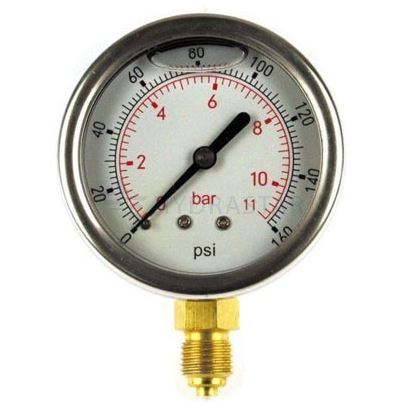Hydraulic pressure testing is necessary for hydraulic systems in order to check their integrity and prevent leaks. Piping systems, boilers, and pressure vessels undergo hydraulic testing to ensure safe and efficient operation.
Hydro tests are usually performed after the equipment has been shut down or repaired. It’s done to make sure that the machine is working properly upon returning to service.
Hydraulic testing usually includes two steps:
- Integrity test – The technician fills the pipeline with water and pressurises it to about 1.5 times higher than its operating pressure. The pressure is applied for about two hours. While the pressure is applied, the technician measures it with a pressure gauge and visually inspects the equipment for damage.
- Tightness test – This test may run for up to a day. Special hydraulic testing equipment is used to measure temperature variations inside the pipeline.
While hydraulic pressure testing is a common procedure, it comes with certain risks.
1) Vessel Or Piping Rupture
If the piping is damaged or worn, hydraulic pressure testing can help identify the problem. However, if there is a small crack or leak the pipe may rupture during testing. This can cause damage and injuries due to flying fragments.
It’s important to check the piping for integrity visually before performing the test. It’s also vital to keep the system isolated during the test to avoid injury. Testing should be conducted at night or on the weekend when the least number of employees are at work.
All technicians performing the test must wear protective gear to prevent injuries in case of a rupture.
2) Serious Leaks
Pressure testing puts a system at increased risk of leakage while it is under load. A leak can damage nearby equipment and cause injuries to workers. In order to serious leaks and other potential damages during hydraulic pressure testing, technicians should follow these guidelines:
- All standards and specifications should be observed from the moment the vessel is filled up to the moment it’s emptied.
- The test shouldn’t be performed at the same time as other operations.
- Equipment must be in fair condition (preliminary checks are essential).
- Hydraulic pressure testing equipment should be checked, even it’s new.
- The test area should be isolated.
- All non-essential personnel should leave the testing area while in progress.
- Test personnel should follow clear testing procedures.
- A leak inspection should be performed at least 15 minutes after the test pressure is completed.
- Only designated personnel should perform leak testing.
- Fittings shouldn’t be tampered with during the pressure test.
3) Equipment Damage
A sudden rupture in piping or a pressure vessel can cause a shock wave that puts nearby equipment and personnel at risk. It’s important to clear the area as much as possible in order for the potential shock wave not to cause serious equipment damage.
Safe Testing
Hydraulic pressure testing can be potentially dangerous without the right equipment. However, with the right preparations and kit in place, it’s possible to test your equipment quickly and efficiently while avoiding damage and injuries.
At Hydrastar we supply a wide range of hydraulic spares and testing equipment. Contact us today on 01353 721 704 to find out more.



